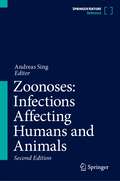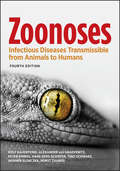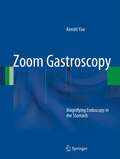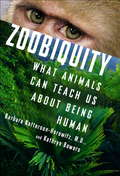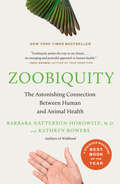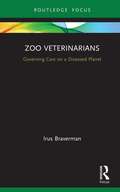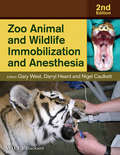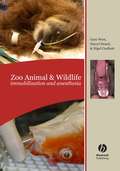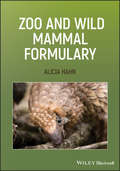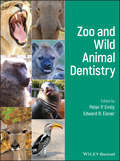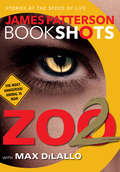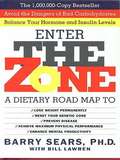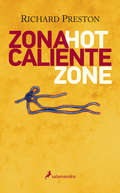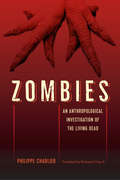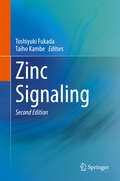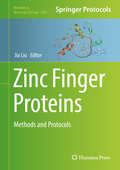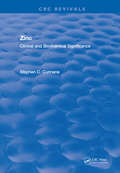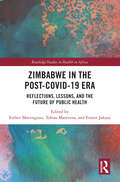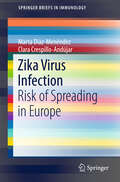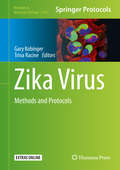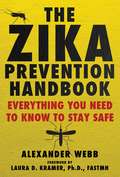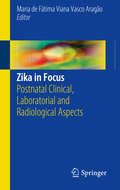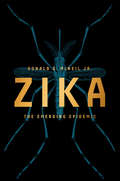- Table View
- List View
Zoonoses: Infections Affecting Humans and Animals
by Andreas SingThis second fully revised and extended edition of “Zoonoses - Infections Affecting Humans and Animals” covers the most important pathogens impacting both human and animal public health and debates current developments in this interdisciplinary field from a One Health perspective. Following a "setting" approach, the individual chapters each review zoonoses occurring in a specific group of animals, such as production animals, pets or wildlife, or in a defined ecosystem. A focus is put on zoonoses emerging along the food chain and on antibiotic resistance as an increasing challenge in infectious disease management. Special interest chapters debate non-resolved and currently hotly debated zoonoses, foremost COVID-19, influenza, Crohn/paratuberculosis and chronic botulism, also taking into account the economic and ecological aspects of zoonotic disease outbreaks. This second edition includes brand-new chapters on emerging pathogens such as SARS-CoV-2, chlamydia and helminths, it reviews historic zoonoses, provides additional insights into pathogens of reptiles and highlights significant neglected tropical diseases. This reference work is a must-read for researchers, health professionals and students in Microbiology and Veterinary Medicine. The book’s ambition to spread knowledge on zoonoses and on strategies on how to tackle them complies with the United Nations Sustainable Goals, in particular Goal 3 – Good Health and Well-Being.
Zoonoses: Infectious Diseases Transmissible from Animals to Humans (ASM Books #39)
by Et Al. Rolf Bauerfeind Alexander Von Graevenitz Peter KimmigZoonoses are a persistent threat to the global human health Today, more than 200 diseases occurring in humans and animals are known to be mutually transmitted. Classical infectious diseases, such as rabies, plague, and yellow fever, have not been eradicated despite major efforts. New zoonotic diseases are on the increase due global conditions such as overpopulation, wars, and food scarcity, which facilitate human contact with rodents, stray animals, and their parasites. In addition, humans are unwittingly becoming accidental hosts and new links in an infectious chain by engaging in activities such as survival training, which involves camping in open areas and consumption of raw or insufficiently cooked food. Zoonotic infections cause a variety of symptoms that often do not provide clear evidence of a known disease. Zoonoses, Fourth Edition, describes most occurring worldwide zoonosis and facilitates the identification, diagnosis and treatment of zoonotic infections. Written by a team of doctors, medical microbiologists and veterinarians, this completely, revised edition covers all aspects of the epidemiology and prevention of zoonotic diseases through clear descriptions of various illnesses. Specifically, this fourth edition covers zoonosis caused by viruses, bacteria, fungi and parasites infections caused by animal bites infections and intoxications by animal foods Iatrogenic transmission of zoonotic pathogens Zoonoses is an indispensable reference for clinicians and laboratorians.
Zoom Gastroscopy
by Kenshi YaoSince magnifying endoscopy of the stomach, or zoom gastroscopy, was first performed at the beginning of the 21st century , there have been numerous findings in the field worldwide. The author of this volume has developed a standardized magnifying endoscopy technique that enables endoscopists to constantly visualize the microanatomy (subepithelial capillaries and the epithelial structure) within the stomach. With this technology, it has become easy to obtain magnified endoscopic findings. Techniques differ, however, depending upon the endoscopist. Endoscopists around the world do not have a standardized magnifying endoscopy technique, which is mandatory for the scientific analysis of their findings. In addition, there is no logical explanation for how and which microanatomies are visualized by magnifying endoscopy with narrow-band imaging in the glandular epithelium of the stomach. This inconsistency results in considerable confusion among researchers and clinicians and a lack of terminology for the purposes of analysis. As magnifying endoscopy with narrow-band imaging (NBI) becomes more popular throughout the world, there is increased demand for a specialized reference book focused on this subject. The aims of the present volume, Zoom Gastroscopy: Magnifying Endoscopy in the Stomach, are manifold: (1) to illustrate the standard magnifying endoscopic technique that can visualize subepithelial mucosal microvessels as small as capillaries, the smallest unit of blood vessels in the human body, (2) to explain the optical phenomena and principles for NBI and its application to magnifying endoscopy, (3) to clarify which microanatomies are visualized by magnifying endoscopy with NBI and how this is achieved, and (4) to present a diagnostic system so called "VS classification system" for early gastric neoplasias. With a single author, the book consistently uses uniform anatomical terms to describe endoscopic findings, providing an essential reference for endoscopists in the world.
Zoobiquity
by Kathryn Bowers Barbara N. HorowitzEngaging science writing that bravely approaches a new frontier in medical science and offers a whole new way of looking at the deep kinship between animals and human beings. Zoobiquity: a species-spanning approach to medicine bringing doctors and veterinarians together to improve the health of all species and their habitats. In the tradition of Temple Grandin, Oliver Sacks, and Neil Shubin, this is a remarkable narrative science book arguing that animal and human commonality can be used to diagnose, treat, and ultimately heal human patients. Through case studies of various species--human and animal kind alike--the authors reveal that a cross-species approach to medicine makes us not only better able to treat psychological and medical conditions but helps us understand our deep connection to other species with whom we share much more than just a planet. This revelatory book reaches across many disciplines--evolution, anthropology, sociology, biology, cutting-edge medicine and zoology--providing fascinating insights into the connection between animals and humans and what animals can teach us about the human body and mind.
Zoobiquity: What Animals Can Teach Us About Health and the Science of Healing
by Kathryn Bowers Barbara Natterson-HorowitzIn the spring of 2005, cardiologist Barbara Natterson-Horowitz was called to consult on an unusual patient: an Emperor tamarin at the Los Angeles Zoo. While examining the tiny monkey's sick heart, she learned that wild animals can die of a form of cardiac arrest brought on by extreme emotional stress. It was a syndrome identical to a human condition but one that veterinarians called by a different name--and treated in innovative ways. This remarkable medical parallel launched Natterson-Horowitz on a journey of discovery that reshaped her entire approach to medicine. She began to search for other connections between the human and animal worlds: Do animals get breast cancer, anxiety-induced fainting spells, sexually transmitted diseases? Do they suffer from obsessive-compulsive disorder, bulimia, addiction? The answers were astonishing. Dinosaurs suffered from brain cancer. Koalas catch chlamydia. Reindeer seek narcotic escape in hallucinogenic mushrooms. Stallions self-mutilate. Gorillas experience clinical depression. Joining forces with science journalist Kathryn Bowers, Natterson-Horowitz employs fascinating case studies and meticulous scholarship to present a revelatory understanding of what animals can teach us about the human body and mind. "Zoobiquity" is the term the authors have coined to refer to a new, species-spanning approach to health. Delving into evolution, anthropology, sociology, biology, veterinary science, and zoology, they break down the walls between disciplines, redefining the boundaries of medicine. Zoobiquity explores how animal and human commonality can be used to diagnose, treat, and heal patients of all species. Both authoritative and accessible, offering cutting-edge research through captivating narratives, this provocative book encourages us to see our essential connection to all living beings.
Zoo Veterinarians: Governing Care on a Diseased Planet (Law, Science and Society)
by Irus BravermanDespite their centrality to the operation of contemporary accredited zoo and aquarium institutions, the work of zoo veterinarians has rarely, if ever, been the focus of a critical analysis in the social science and humanities. Drawing on in-depth interviews and observations of zoo and aquarium veterinarians in Europe and North America, this book highlights the recent transformation that has occurred in the zoo veterinarian profession during a time of ecological crisis, and what these changes can teach us about our rapidly changing planet. Zoo vets, Braverman instructs us with a wink, have "gone wild." Originally an individual welfare-centered profession, these experts are increasingly concerned with the sustainability of wild animal populations and with ecological health. In this sense, the story of zoo vets "going wild"—in their subjects of care, their motivations, and their ethical standards, as well as in their professional practices and scientific techniques—is also a story about zoo animals gone wild, wild animals encroaching the zoo, and, more generally, a wild world that is becoming "zoo-ified." Such transformations have challenged existing norms of veterinary practice. Exploring the regulatory landscape that governs the work of zoo and aquarium veterinarians, Braverman traverses the gap between the hard and soft sciences and between humans and nonhumans. At the intersection of animal studies, socio-legal studies, and Science and Technology Studies, this book will appeal not only to those interested in zoos and in animal welfare, but also to scholars in the posthumanities.
Zoo Vet: Adventures of A Wild Animal Doctor
by David TaylorIn this book, Taylor shares some of his experiences as he cares for exotic animals. Not all stories have happy endings, but all are heart-warming. This is an honest look at what it was like to be a zoo vet in the fifties and sixties.
Zoo Animal and Wildlife Immobilization and Anesthesia
by Darryl Heard Gary West Nigel CaulkettZoo Animal and Wildlife Immobilization and Anesthesia, Second Edition is a fully updated and revised version of the first comprehensive reference on anesthetic techniques in captive and free-ranging wildlife. Now including expanded coverage of avian and aquatic species, this exhaustive resource presents information on the full range of zoo and wildlife species. Covering topics ranging from monitoring and field anesthesia to CPR and euthanasia, the heart of the book is devoted to 53 species-specific chapters providing a wealth of information on little-known and common zoo and wildlife animals alike. In addition to new species chapters, the new edition brings a new focus on pain management, including chronic pain, and more information on species-specific physiology. Chapters on airway management, monitoring, emergency therapeutics, and field procedures are all significantly expanded as well. This update to Zoo Animal and Wildlife Immobilization and Anesthesia is an invaluable addition to the library of all zoo and wildlife veterinarians.
Zoo Animal and Wildlife Immobilization and Anesthesia
by Darryl Heard Gary West Nigel CaulkettZoo Animal and Wildlife Immobilization and Anesthesia is the definitive, comprehensive reference for the growing fields of zoo, wildlife, and exotic animal veterinary medicine. <P><P>This book covers key aspects of immobilization and anesthesia from pharmacology and restraint to supportive care. Alongside these chapters, the editors have brought together an impressive collection of species-specific chapters that will be an invaluable resource to those called upon to treat these animals.
Zoo and Wild Mammal Formulary
by Alicia HahnZoo and Wild Mammal Formulary offers fast access to authoritative dosing information for drugs used in more than 35 zoo and wild mammal groups, including marsupials, bears, and elephants. Taking an easy-to-use tabular format, the book is organized by taxa, with drug doses sorted by type and alphabetically arranged in every chapter. Clear and comprehensive, the book offers dosages for all important drugs, including antibiotics, antifungals, anesthetics, analgesics, and more. Each dose is referenced with a journal or textbook source, including the number of animals in the study where available, making it easy to find trusted information. Offers essential drug information for a wide range of zoo and wild mammals in an easy-to-consult format Provides dosing amounts for all important drugs, including antibiotics, antifungals, anesthetics, and analgesics Includes dosages for over 35 mammal groups, including marsupials, bears, and elephants Takes a tabular approach for quick reference Makes it easy to find a referenced dose for these animals, eliminating time spent searching through other sources Zoo and Wild Mammal Formulary is an essential reference for all veterinarians seeing zoo and wild animal patients, including zoo and wildlife veterinarians, veterinary specialists, and veterinary students.
Zoo and Wild Animal Dentistry
by Edward R. Eisner Peter P. EmilyZoo and Wild Animal Dentistry is the first book to offer a comprehensive reference to oral pathology and dental therapy in captive and wild exotic animals. Comprehensive in scope, the book is authored by noted experts on the topic who cover dental care for a broad range of species with an emphasis on oral health. Designed as a practical resource for treating exotic animals, the book is filled with instructive photographs and illustrations that clearly depict pathologies and demonstrate techniques. The book draws on the editors’ and contributors’ years of experience with exotic animals to offer a reliable resource to the history of veterinary dentistry, information on the evolution of teeth, practical dental therapeutics, and oral descriptions for each of the more than three hundred species included in the book. Zoo and Wild Animal Dentistry covers a wide range of zoo and wild species, including cats, bears, primates, dogs, raccoons, weasels, hyenas, marsupials, herbivores, edentates, sea mammals, birds, reptiles, and more. This important resource: Offers a comprehensive reference to oral pathology and dental therapy in captive and wild animals Highlights oral health to promote overall health Includes information on the most recent advances in the field Contains a groundbreaking resource for the dental care of exotic animals Written for zoo and wildlife caretakers and veterinarians, veterinary dentists, veterinary technicians, and veterinary students, Zoo and Wild Animal Dentistry is a practical resource that has information for the dental care of a wide range of animal species that are all too often neglected.
Zoo 2 (BookShots)
by James Patterson Max Dilallo<P>Will the last humans on Earth please turn out the lights? <P>James Patterson's ZOO was just the beginning. The planet is still under violent siege by ferocious animals. Humans are their desperate prey. Except some humans are evolving, mutating into a savage species that could save civilization-or end it. <P><b>A New York Times Bestseller</b>
The Zone: A Dietary Road Map (1st Edition)
by Barry Sears Bill LawrenA revolutionary life plan to put your body in total balance for permanent weight loss. This dietary technology is the most powerful means ever discovered to help people achieve that state of optimal good health, physical performance, and mental alertness that's called the Zone. Staying in the Zone is your best defense to ward off cancer, and has a positive impact on a host of other diseases, including diabetes, arthritis, "mental" diseases like depression and alcoholism, even chronic fatigue. In fact, reaching the Zone and maintaining it should ultimately help us reach that most universal of personal goals: to live longer, healthier, and more satisfying lives. In the bargain, staying in the Zone will keep us performing at our absolute best-hour after hour, day after day, month after month-for the rest of our lives.
Zona caliente
by Richard PrestonLa historia del brote de Ébola más mortífero en la historia: un relato apasionante de los médicos y científicos que lucharon, y luchan, por protegernos. Zona caliente: área del laboratorio denominada así por los científicos que investigan los virus más letales como el ébola. Sellada herméticamente, sus accesos están rigurosamente controlados y los operarios visten trajes especiales sometidos a duchas de desinfección antes de abandonar el recinto. Parte de los hechos narrados en este libro transcurren en una «zona caliente» gestionada por el Ejército de Estados Unidos en Maryland. Zona caliente fue escrito y publicado en 1994 para explicar los orígenes y la evolución del virus ébola y advertir del peligro de su propagación en el futuro. Su autor, Richard Preston, catedrático de la Universidad de Princeton y un destacado especialista en abordar temas científicos con un alto nivel de rigor y conocimiento de la materia -ha sido galardonado con el Premio del Instituto de Física de Estados Unidos y Zona caliente es lectura recomendada en los institutos de Norteamérica-, fue el primero en dar a conocer al gran público la amenaza del ébola, un virus potencialmente mil veces más letal que el VIH del sida y que, hasta el día de hoy, no ha sido controlado en su totalidad. La narración de esta historia, que se lee como una novela, se basa en hechos reales documentados con precisión y contrastados hasta el límite de lo posible. El resultado es un relato apasionante y esclarecedor, una fuente rica en datos fidedignos sobre todos los aspectos involucrados en este desafío de la naturaleza. Así, los lectores podrán formarse una opinión razonada por encima de todo el torrente de informaciones fragmentadas que propician en la opinión pública una sensación de desconcierto y temor.
Zombies: An Anthropological Investigation of the Living Dead
by Philippe Charlier“A compelling account of the zombi as an anthropological reality and evocative symbol of a state of dispossession, desperation, and death.”—Roger Luckhurst, author of Zombies: A Cultural History “An adventurer’s anthropological quest offering a novel description of the contemporary zombie.”—Sarah J. Lauro, author of The Transatlantic Zombie: Slavery, Rebellion, and Living Death “Displays an empathy for the cultural reality of the zombie in Haiti that delivers important insight on the island nation’s people and their lived realities.”—Christopher M. Moreman, coeditor of Race, Oppression and the Zombie: Essays on Cross-Cultural Appropriations of the Caribbean Tradition Forensic pathologist Philippe Charlier—dubbed the “Indiana Jones of the graveyards”—travels to Haiti where rumors claim that some who die may return to life as zombies. Charlier investigates these far-fetched stories and finds that, in Haiti, the dead are a part of daily life. Families, fearing that loved ones may return from the grave, urge pallbearers to take rambling routes to prevent the recently departed from finding their way home from cemeteries. Corpses are sometimes killed a second time…just to be safe. And a person might spend their life preparing their funeral and grave to ensure they will not become a wandering soul after death. But are the stories true? Charlier’s investigations lead him to Vodou leader Max Beauvoir and other priests, who reveal how bodies can be reanimated. In some cases, sorcerers lure the dead from their graves and give them a potion concocted from Devil’s Snare, a plant more commonly known as Jimsonweed. Sometimes secret societies use poudre zombi—“zombie powder”—spiked with the tetrodotoxin found in blowfish. Charlier eagerly collects evidence, examining Vodou dolls by X-ray, making sacrifices at rituals, and visiting cemeteries under the cloak of night. Zombies follows Charlier’s journey to understand the fascinating and frightening world of Haiti’s living dead, inviting readers to believe the unbelievable.
Zo werkt het in de apotheek (Basiswerk AG)
by J.R. Mentink C.R.C. Huizinga-ArpDit boek biedt de noodzakelijke basis voor apothekersassistenten in opleiding om in de beroepspraktijkvorming een beeld te krijgen van bepaalde werkwijzen in de apotheek. Ze krijgen antwoorden op vragen als: Hoe verloopt een dag in de apotheek? Welke producten en diensten levert een apotheek? Wie werken er? Hoe wordt het werk georganiseerd? Aan welke regels moet worden voldaan en welke kwaliteitseisen worden gesteld? Hoe wordt alles betaald? Zo werkt het in de apotheek heeft raakvlakken met alle kerntaken uit het Kwalificatiedossier mbo Apothekersassistent: geïndividualiseerde farmaceutische patiëntenzorg (kerntaak 1), niet-receptgestuurde zorg aan de patiënt (kerntaak 2), productzorg (kerntaak 3) en werken aan kwaliteit en deskundigheid (kerntaak 4). Een goedlopende apotheek heeft al deze elementen samen weten te brengen in een organisatie die bovendien op de juiste manier weet in te spelen op de alsmaar veranderende omgeving. Hoewel de openbare apotheek centraal staat, worden ook andere soorten apotheken besproken en is aandacht voor andere zorgverleners waarmee de apotheek samenwerkt. Daarnaast wordt stilgestaan bij de kosten van de gezondheidszorg. Hierbij komt de steeds belangrijker wordende rol van de zorgverzekeraar aan bod, zoals de invloed van contractafspraken tussen apothekers en zorgverzekeraars op het werk van apothekersassistenten. In het boek is verder aandacht voor de wet- en regelgeving waarmee de apothekersassistenten in aanraking komen en die de dagelijkse werkzaamheden beïnvloedt.Deze nieuwe editie is geactualiseerd en aangepast aan nieuwe wet- en regelgeving, zoals de AVG. Het boek is een onmisbaar naslagwerk voor apothekersassistenten (in opleiding). Jeroen Mentink (1977) studeerde farmacie in Utrecht en behaalde daar in 2003 het apothekersdiploma. Hij is werkzaam als openbaar apotheker in Zierikzee. Naast zijn werkzaamheden als apotheker is hij actief in diverse commissies, docent voor na- en bijscholingen op mbo, hbo en universitair niveau en betrokken bij de ontwikkeling van vakinhoudelijke nascholingen voor diverse doelgroepen.Carolijn Huizinga-Arp (1967) studeerde farmacie in Utrecht en behaalde daar in 1992 het apothekersdiploma. Zij is werkzaam als openbaar apotheker, actief in verschillende bestuurlijke functies en vanuit haar eigen schrijfbureau betrokken bij de ontwikkeling van cursussen voor apothekersassistenten, doktersassistenten, huisartsen en apothekers.
Zinc Signaling
by Toshiyuki Fukada Taiho KambeThis book, now in an extensively revised second edition, describes the crucial role of zinc signaling in biological processes on a molecular and physiological basis. Global leaders in the field review the latest knowledge, including the very significant advances in understanding that have been achieved since publication of the first edition. Detailed information is provided on all the essentials of zinc signaling, covering molecular aspects and the roles of zinc transporters, the zinc sensing receptor, and metallothioneins. Detection techniques for zinc signals, involving genetically encoded and chemical probes, are also described. The critical contributions of the zinc signal in maintaining health and the adverse consequences of any imbalance in the signal are then thoroughly addressed. Here, readers will find up-to-date information on the significance of the zinc signal in a wide range of conditions, including cardiovascular disorders, neurodegenerative diseases, diabetes, autoimmune diseases, inflammatory conditions, skin disease, osteoarthritis, and cancer. The book will be of value for researchers, clinicians, and advanced students.
Zinc Finger Proteins: Methods and Protocols (Methods in Molecular Biology #1867)
by Jia LiuThis detailed volume explores the notable progress in the field of zinc finger proteins (ZFP) study through widely used methods and protocols involving their biological functions and applications. Beginning with a section on the basic biology of ZFPs and design and applications of custom ZFPs, the book continues by covering methods for the evaluation and prevention of ZFN-mediated cytotoxicity as well as a collection of the representative methods of ZFN delivery. Written for the highly successful Methods in Molecular Biology series, chapters include introductions to their respective topics, lists of the necessary materials and reagents, step-by-step, readily reproducible laboratory protocols, and tips on troubleshooting and avoiding known pitfalls. Authoritative and practical, Zinc Finger Proteins: Methods and Protocols aims to prompt both the understanding of ZFP biology and the development of next-generation ZFP therapeutics.
Zinc Clinical and Biochemical Significance
by Stephen C. CunnaneIn keeping with the etiology theme, it also became apparent that the clinical aspects needed to be strictly separated from the animal aspects of zinc metabolism, a separation that has never previously been attempted. Although this division, like the separation of primary from secondary zinc depletion, may be somewhat arbitrary, it is the author‘s impression that current knowledge of the truly clinical aspects of zinc metabolism is too often confused with its effects in animals. The two will frequently be similar, but not always. In this book, therefore, animal studies are considered in part 2 (Biochemistry. Only a handful of references to animal studies has been included in part 1 (Clinical). The purpose of this separation is to clearly distinguish animal from human, experimental from clinical. Too many of the animal studies have involved severe and prolonged zinc deficiency or other exaggerated nutritional conditions that cannot be realistically applied in the clinical setting. Furthermore, animal studies are mainly or primary (dietary) zinc depletion, whereas in humans, secondary zinc depletion is more prevalent and has a more diverse etiology.
Zimbabwe in the Post-COVID-19 Era: Reflections, Lessons, and the Future of Public Health (Routledge Studies in Health in Africa)
by Esther Mavengano, Tobias Marevesa, and Ernest JakazaThis comprehensive book brings together reflections, lessons and insights relating to the post Covid-19 era in Zimbabwe. The outbreak of the COVID-19 pandemic has immensely affected all facets of humanity globally. Its impact on Zimbabwe is evident through its effect on socio-economic and education systems, politics, religion, infrastructural development, and health delivery systems. This book provides scholarly introspections into the lessons drawn from the pandemic in an effort to re-imagine the future possibilities of public health in Zimbabwe and beyond. Providing a platform for research that seeks to re-think global public health matters from a Decolonial school of thought, the book asks questions such as: What is the role of religion, linguistics, communication, education, economics, politics, and science in preparing Zimbabwe for possible future pandemics? How can the lessons drawn from the pandemic inform scholars to re-imagine the future trajectories of the country in the various domains? How can researchers evaluate the power and economic dialectics of COVID-19, navigate the tumultuous challenges generated, and come up with appropriate systems for future pandemics? Offering a realistic picture of the post COVID-19 era in Zimbabwe, the book will be a key resource to students and researchers across the fields of political communication, science communication, decolonial discourse, language and culture, as well as African Studies more broadly.
Zika Virus Infection: Risk of Spreading in Europe (SpringerBriefs in Immunology)
by Marta Díaz-Menéndez Clara Crespillo-AndújarThis book describes the demographic and clinical patterns of Zika infection and evaluates the risk of it spreading to Europe. It reflects the hands-on experience of the author, who as a physician, was faced with the first-ever cases reported in Europe. Providing essential background information on the viral vector, it addresses the various symptoms after infection, and places them in the epidemiological context of past outbreaks.
Zika Virus: Methods and Protocols (Methods in Molecular Biology #2142)
by Gary Kobinger Trina RacineThis volume discusses the latest protocols used by scientists to understand ZIKV and how to mitigate its presence. These studies will benefit in the detection, diagnosis, management, treatment, and prevention of this infection. The chapters in this book cover techniques in virus isolation, purification, and ways to titrate the virus; recent advancements made in the development of modified molecular techniques; and a discussion on Zika virus itself to help readers better understand this pathogen. Written in the highly successful Methods in Molecular Biology series format, chapters include introductions to their respective topics, lists of the necessary materials and reagents, step-by-step, readily reproducible laboratory protocols, and tips on troubleshooting and avoiding known pitfalls.Cutting-edge and practical, Zika Virus: Methods and Protocols is a valuable resource for both novice and expert scientists interested in learning more about this important topic.
Zika Prevention Handbook: Everything You Need To Know To Stay Safe
by Alexander Webb Laura KramerAs the Zika virus continues to spread throughout North America, people need answers. What are the origins of this virus? How does it spread? Should we be concerned? How can we stop the spread of infected mosquitos? With the increasing prevalence of Zika, concrete answers are needed now more than ever - The Zika Prevention Handbook serves as the best reference for readers to stay informed about side-effects and symptoms, and to minimize your chance of contracting the virus. The Zika virus is a mosquito-borne infection that is estimated to have originated in Africa in the mid 1940's. In the last several years, the Zika virus has infected thousands of people around the world and has spread to over 60 countries. As of August 2016, Zika-infected mosquitoes have found a new home, the United States. The Zika virus has been reported in all 50 U. S. states, in addition to hundreds of reported cases throughout Mexico and Canada. With the assistance of infectious disease expert, Laura D. Kramer, PhD, author Alexander Webb has compiled the leading research from the U. S. Centers for Disease Control and Prevention (CDC). Whether you're an expectant mother worried about microcephaly (a side effect of Zika that causes babies to be born with abnormally small heads), planning a vacation to a tropical area, or living in an area where these contagious mosquitoes reside, this book is guaranteed to answer all your questions and ease your fears. Readers will learn about Zika's origins, transmission of the infection, leading prevention techniques, medical testing, symptoms and diagnosis, and much more. Do yourself a favor and arm yourself with the life-saving knowledge contained in The Zika Prevention Handbook
Zika in Focus: Postnatal Clinical, Laboratorial and Radiological Aspects
by Maria de Fátima Viana Vasco AragãoThis book addresses the most important postnatal features of Zika virus infection, providing important information on its epidemiology, pathology, clinical aspects, imaging and laboratory diagnosis. Since the report of a Zika virus infection epidemic in Northeastern Brazil in 2015, the world has paid close attention to this emergent disease. Historically, this has been the third outbreak of Zika infection described (preceded by outbreaks in Micronesia and French Polynesia), but for the first time the association with congenital microcephaly and other neurological co-morbidities in infants from women infected with the Zika virus was observed. Since then, government bodies, public health agencies, medical societies and scholars have joined forces to understand this disease, and to promote its prevention and management. <P><P>Currently, the relationship between Zika virus and microcephaly is well established, as well as the most characteristic findings of congenital Zika syndrome (e.g. microcephaly, arthrogryposis, ophthalmologic and hearing abnormalities). Also, the spectrum of the disease’s severity has broadened, with less severe cases (without microcephaly) being recently recognized. Even so, there is currently a dearth of material on Zika virus infection for healthcare professional around the world. <P>Addressing that gap, Zika In Focus – Postnatal Aspects aims to help the medical community worldwide by presenting the most important features of Zika virus infection from a postnatal perspective. It is intended to all professionals and researchers interested in this condition, especially paediatricians, radiologists and neurologists, offering them a practical guide to recognizing congenital Zika syndrome in its many aspects and focusing on the radiological pattern of lesions that can be found from the mild to the most severe cases.
Zika: The Emerging Epidemic
by Donald G. Mcneil Jr.A gripping narrative about the origins and spread of the Zika virus by New York Times science reporter Donald G. McNeil Jr. Until recently, Zika--once considered a mild disease--was hardly a cause for global panic. But as early as August 2015, doctors in northeast Brazil began to notice a trend: many mothers who had recently experienced symptoms of the Zika virus were giving birth to babies with microcephaly, a serious disorder characterized by unusually small heads and brain damage. By early 2016, Zika was making headlines as evidence mounted--and eventually confirmed--that microcephaly is caused by the virus, which can be contracted through mosquito bites or sexually transmitted. The first death on American soil, in February 2016, was confirmed in Puerto Rico in April. The first case of microcephaly in Puerto Rico was confirmed on May 13, 2016. The virus has been known to be transmitted by the Aedes aegypti or Yellow Fever mosquito, but now Aedes albopictus, the Asian Tiger mosquito, has been found to carry it as well, which means it might affect regions as far north as New England and the Great Lakes. Right now, at least 298 million people in the Americas live in areas "conducive to Zika transmission," according to a recent study. Over the next year, more than 5 million babies will be born. In Zika: The Emerging Epidemic, Donald G. McNeil Jr. sets the facts straight in a fascinating exploration of Zika's origins, how it's spreading, the race for a cure, and what we can do to protect ourselves now.
